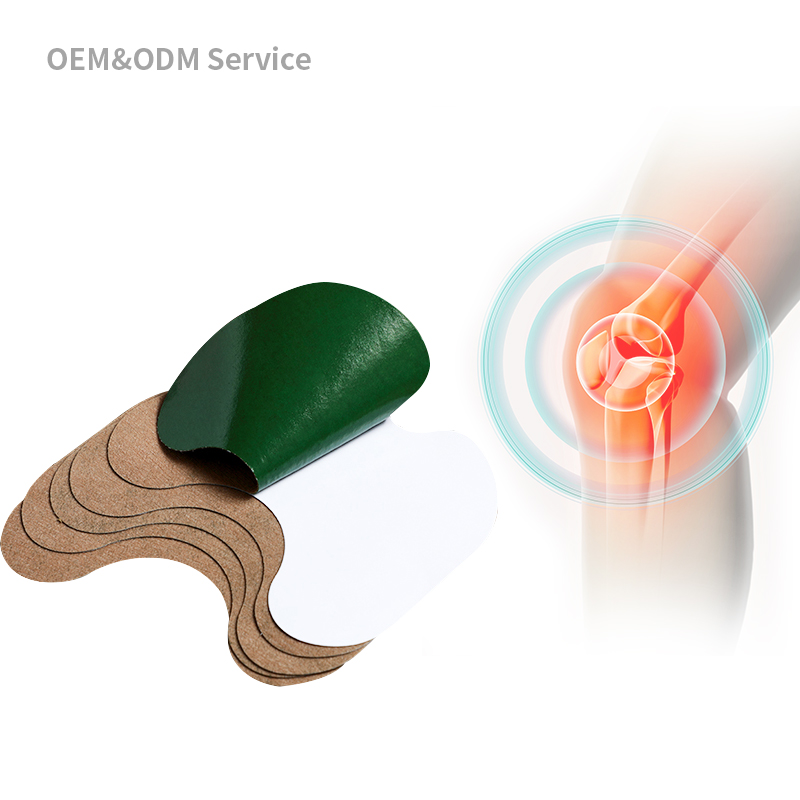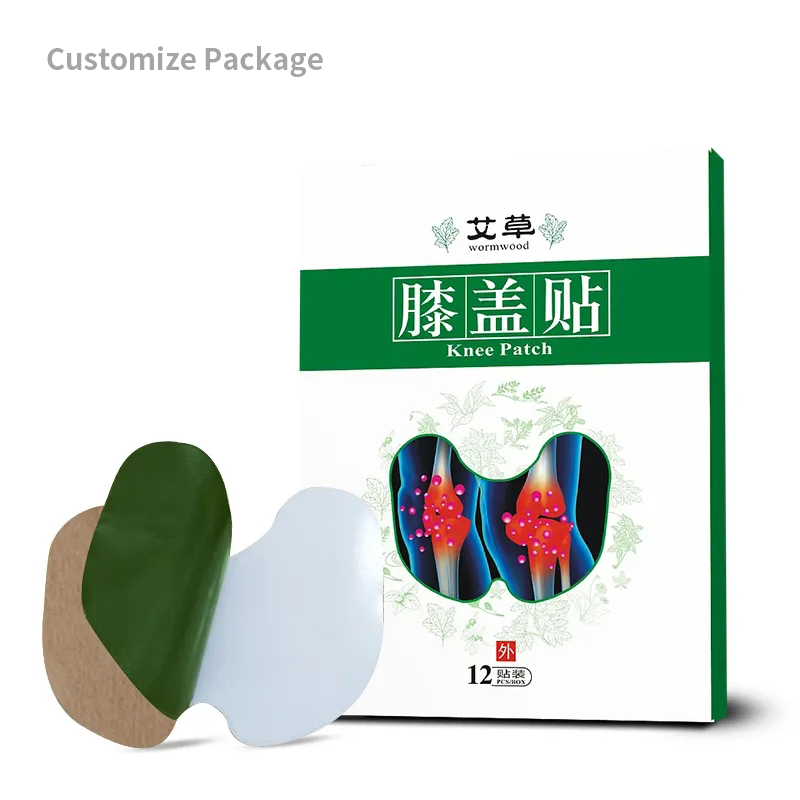Future Challenges and Solutions: Innovative Developments in Knee Pain Relief Patches
Knee pain relief patches have gained significant popularity as a non-invasive solution for managing knee pain. However, as the market evolves, manufacturers, suppliers, and OEMs face new challenges. This article explores the future challenges and innovative solutions in the development of knee pain relief patches. By analyzing emerging trends and technological advancements, we provide insights into how the industry can overcome obstacles and continue to deliver effective pain relief solutions.

Future Challenges in Knee Pain Relief Patches
1. Increasing Demand for Natural and Sustainable Products
Challenge: Consumers are increasingly seeking natural and sustainable products, posing a challenge for knee pain relief patches manufacturers who rely on synthetic ingredients and non-recyclable packaging.
Solution: Manufacturers can invest in research and development to create formulations with natural ingredients such as essential oils, herbal extracts, and bioactive compounds. Additionally, adopting eco-friendly packaging materials, such as biodegradable plastics or recyclable paper, can help meet consumer demand for sustainability.
2. Enhanced Efficacy and Targeted Delivery
Challenge: While current knee pain relief patches are effective, there is a growing demand for enhanced efficacy and more targeted delivery systems.
Solution: Advancements in nanotechnology and transdermal delivery systems can address this challenge. Nanoparticles can enhance the penetration of active ingredients, ensuring deeper and more targeted delivery. Incorporating micro-needles in patches can also improve efficacy by facilitating direct delivery to affected tissues.
3. Regulatory Compliance and Safety
Challenge: Stricter regulatory standards and safety concerns present challenges for knee pain relief patches OEMs and suppliers.
Solution: Staying abreast of regulatory changes and investing in rigorous testing and quality control processes are essential. Collaborating with regulatory experts to ensure compliance with international standards can mitigate risks and ensure product safety.
4. Customization and Personalization
Challenge: The demand for custom knee pain relief patches tailored to individual needs is increasing, posing a challenge for large-scale production.
Solution: Implementing flexible manufacturing processes and utilizing advanced technologies such as 3D printing can enable customization at scale. Personalized patches with specific formulations and designs can cater to individual needs, enhancing customer satisfaction.
5. Competition and Market Saturation
Challenge: The knee pain relief patch market is becoming increasingly competitive, with numerous players offering similar products.
Solution: Differentiation through innovation is key. Investing in unique formulations, novel delivery methods, and exclusive partnerships can set a brand apart. Additionally, focusing on niche markets, such as sports enthusiasts or the elderly, can help mitigate the effects of market saturation.
Innovative Developments in Knee Pain Relief Patches
1. Smart Patches
Innovation: Integrating smart technology into knee pain relief patches can revolutionize pain management. Smart patches equipped with sensors can monitor pain levels, track usage, and provide real-time feedback to users and healthcare providers.
Example: A knee pain relief patches manufacturer develops a smart patch that connects to a mobile app, allowing users to monitor pain relief progress and adjust treatment accordingly.
2. Heat-Activated Patches
Innovation: Heat-activated knee pain relief patches utilize thermotherapy to enhance pain relief. These patches generate heat upon application, providing soothing warmth that alleviates pain and improves blood circulation.
Example: A knee pain relief patches supplier introduces a heat-activated patch infused with capsaicin and menthol, offering a dual-action approach to pain relief through heat and active ingredients.
3. Bioadhesive Patches
Innovation: Bioadhesive patches use natural adhesives derived from biological sources, offering better skin compatibility and reduced irritation. These patches ensure prolonged adherence and effectiveness.
Example: A custom knee pain relief patches manufacturer creates a bioadhesive patch with herbal extracts, providing long-lasting pain relief while being gentle on the skin.
4. Multi-Active Ingredient Patches
Innovation: Combining multiple active ingredients in a single patch can provide comprehensive pain relief by targeting different pain pathways.
Example: A private label knee pain relief patches producer launches a patch with a combination of NSAIDs, lidocaine, and herbal extracts, offering a multifaceted approach to managing knee pain.
5. Sustainable and Eco-Friendly Patches
Innovation: Developing patches with sustainable materials and environmentally friendly manufacturing processes can appeal to eco-conscious consumers.
Example: A knee pain relief patches OEM introduces a line of patches made from biodegradable materials and packaged in recyclable containers, highlighting their commitment to sustainability.
Case Studies of Innovative Knee Pain Relief Patches
1. FlexPatch Smart Knee Pain Relief
Manufacturer: FlexPatch Technologies
Innovation: FlexPatch developed a smart knee pain relief patch that monitors pain levels and temperature. The patch sends data to a mobile app, allowing users to track their pain relief progress and receive personalized treatment recommendations.
Outcome: Users reported significant improvements in pain management and appreciated the real-time feedback provided by the app.
2. EcoRelief Bioadhesive Knee Patch
Manufacturer: EcoRelief Health
Innovation: EcoRelief created a bioadhesive knee pain relief patch using natural adhesives and herbal extracts. The patch offers long-lasting pain relief while being gentle on sensitive skin.
Outcome: The product received positive feedback for its effectiveness and eco-friendly attributes, appealing to environmentally conscious consumers.
Conclusion
The future of knee pain relief patches lies in innovation and adaptability. By addressing challenges such as demand for natural products, enhanced efficacy, regulatory compliance, customization, and market competition, manufacturers, suppliers, and OEMs can continue to thrive. Embracing advancements in smart technology, bioadhesives, multi-active ingredients, and sustainable materials will ensure that knee pain relief patches remain a vital tool in pain management.
Frequently Asked Questions (FAQs)
1. What are the emerging trends in knee pain relief patches?
Emerging trends include smart patches with real-time monitoring, heat-activated patches, bioadhesive patches, multi-active ingredient patches, and sustainable materials.
2. How can manufacturers address the demand for natural and sustainable products?
Manufacturers can invest in research to create natural formulations and adopt eco-friendly packaging materials to meet consumer demand for sustainability.
3. What technologies can enhance the efficacy of knee pain relief patches?
Nanotechnology, micro-needles, and advanced transdermal delivery systems can enhance the efficacy of knee pain relief patches by improving targeted delivery and absorption.
4. How can companies ensure regulatory compliance and safety?
Companies should stay updated on regulatory standards, invest in rigorous testing and quality control, and collaborate with regulatory experts to ensure compliance and safety.
5. What role does customization play in knee pain relief patches?
Customization allows manufacturers to create personalized patches tailored to individual needs, enhancing customer satisfaction and catering to specific market segments.
By addressing these challenges and embracing innovative developments, knee pain relief patches manufacturers, OEMs, and suppliers can continue to provide effective pain management solutions and maintain a competitive edge in the market.






